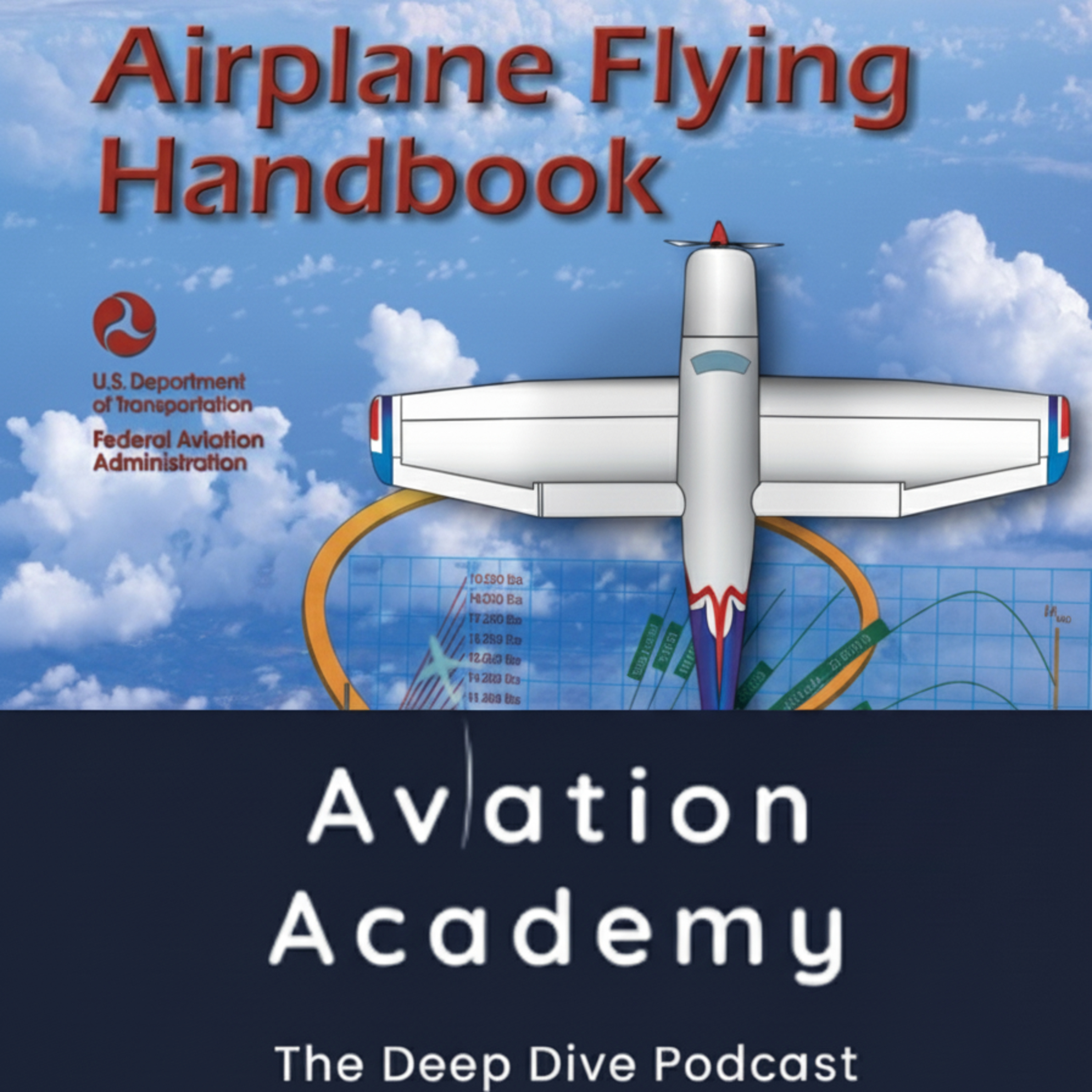Chapter 7: Ground Reference Maneuvers
- Author
- Nathan Genereux
- Published
- Fri 29 Aug 2025
- Episode Link
- https://podcasters.spotify.com/pod/show/aviationacademy/episodes/Chapter-7-Ground-Reference-Maneuvers-e37eukd
Aviation Academy moves into Chapter 7 of the Airplane Flying Handbook (FAA-H-8083-3C), where pilots take the four fundamentals—straight-and-level, turns, climbs, and descents—and put them into practice with ground reference maneuvers. These exercises are designed to sharpen coordination, timing, wind correction, and division of attention while flying in reference to objects on the ground.
In this episode, we explore the purpose and techniques of maneuvers such as the rectangular course, turns around a point, S-turns across a road, and elementary eights. You’ll learn how these skills prepare pilots for traffic patterns, aerial surveys, sightseeing flights, and any situation that requires precise ground tracking. We’ll also break down advanced variations like eights along a road, eights across a road, eights around pylons, and the demanding “eights on pylons,” which develop intuitive energy and bank control through the concept of pivotal altitude.
Beyond just stick-and-rudder skills, this chapter emphasizes situational awareness—scanning for hazards like towers, wires, and other aircraft—while maintaining control and precision at lower altitudes. We’ll cover how wind drift impacts every maneuver, why constant radius turns require continuous bank adjustments, and how ground references build the foundation for safe traffic pattern work and landings.
By mastering ground reference maneuvers, pilots develop the ability to fly with precision, anticipate wind effects, and maintain orientation in challenging conditions. These skills are more than just checkride requirements—they are the practical tools that allow every pilot to connect what they feel in the cockpit with what they see on the ground, ensuring accuracy, safety, and confidence in everyday flying.
